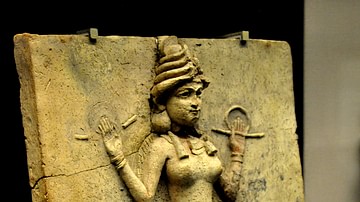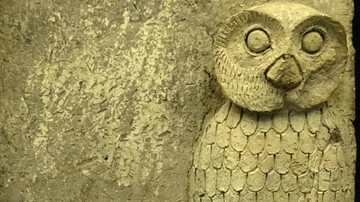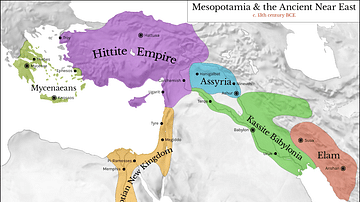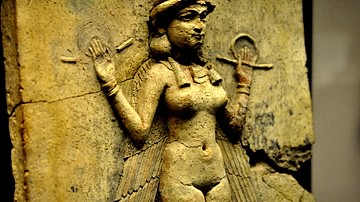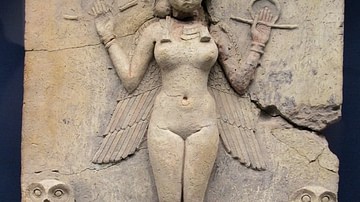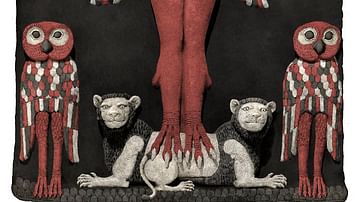Illustration
Queen of the Night, a large plaque made of baked straw-tempered clay, modelled in high relief. From southern Iraq, Old Babylonian period, 1800-1750 BCE.
The figure of the curvaceous naked woman was originally painted red. She wears the horned headdress characteristic of a Mesopotamian deity and holds a rod and ring of justice, symbols of her divinity. Her long multi-coloured wings hang downwards, indicating that she is a goddess of the Underworld. Her legs end in the talons of a bird of prey, similar to those of the two owls that flank her. The background was originally painted black, suggesting that she was associated with the night. She stands on the backs of two lions, and a scale pattern indicates mountains.
The figure could be an aspect of the goddess Ishtar, Mesopotamian goddess of sexual love and war, or Ishtar's sister and rival, the goddess Ereshkigal who ruled over the Underworld, or the demoness Lilitu, known in the Bible as Lilith. The plaque probably stood in a shrine.
The British Museum, London.
Cite This Work
APA Style
Museum, T. o. t. B. (2012, April 26). Queen of the Night, Old Babylon. World History Encyclopedia. Retrieved from https://www.worldhistory.org/image/500/queen-of-the-night-old-babylon/
Chicago Style
Museum, Trustees of the British. "Queen of the Night, Old Babylon." World History Encyclopedia. Last modified April 26, 2012. https://www.worldhistory.org/image/500/queen-of-the-night-old-babylon/.
MLA Style
Museum, Trustees of the British. "Queen of the Night, Old Babylon." World History Encyclopedia. World History Encyclopedia, 26 Apr 2012. Web. 28 Mar 2025.

